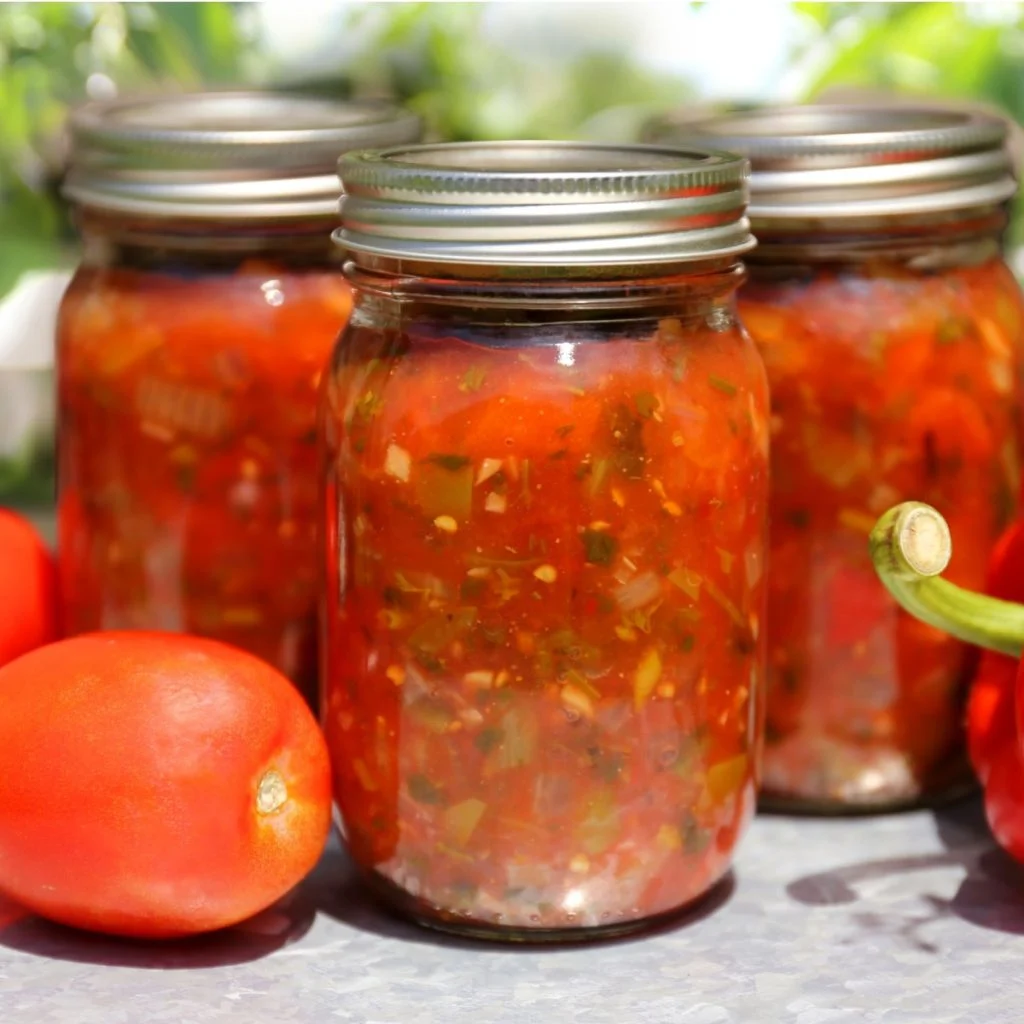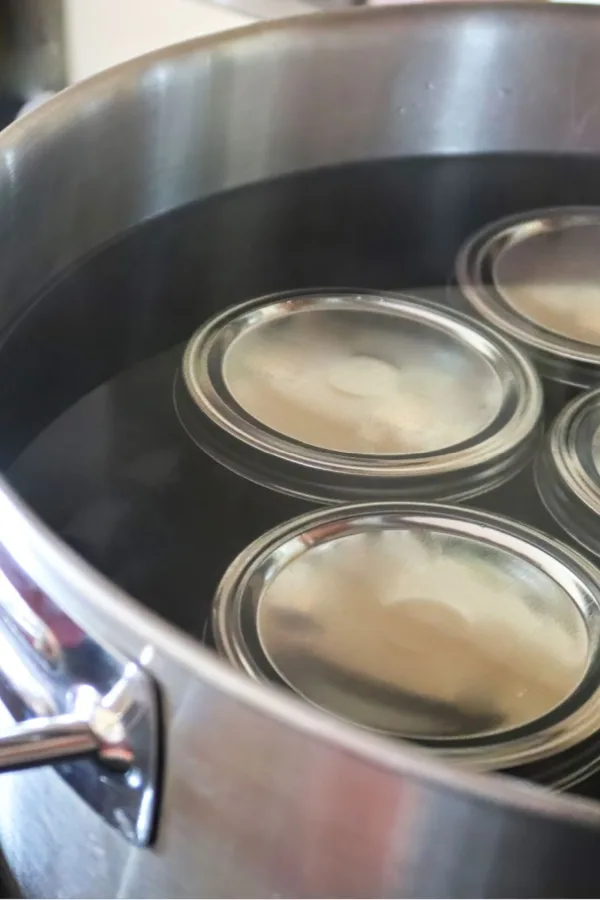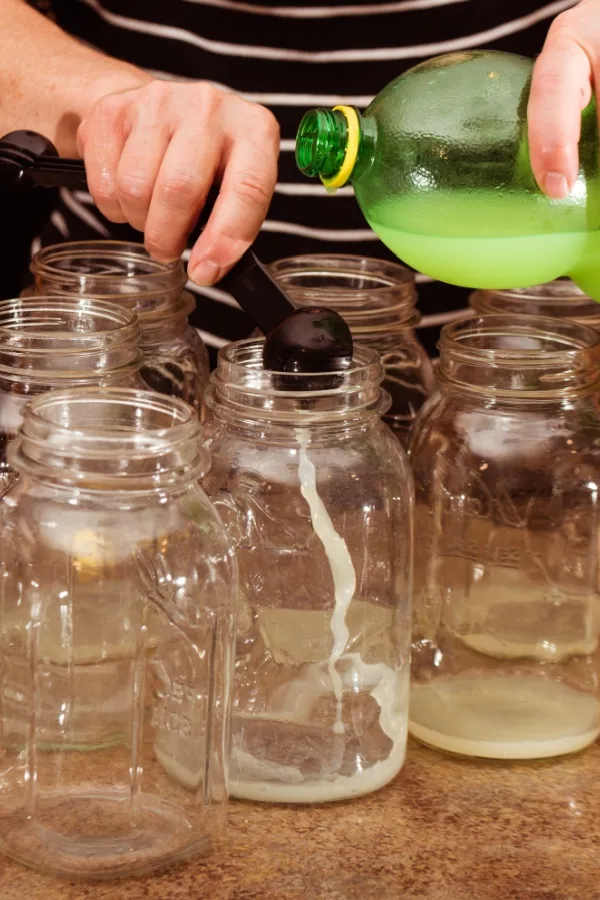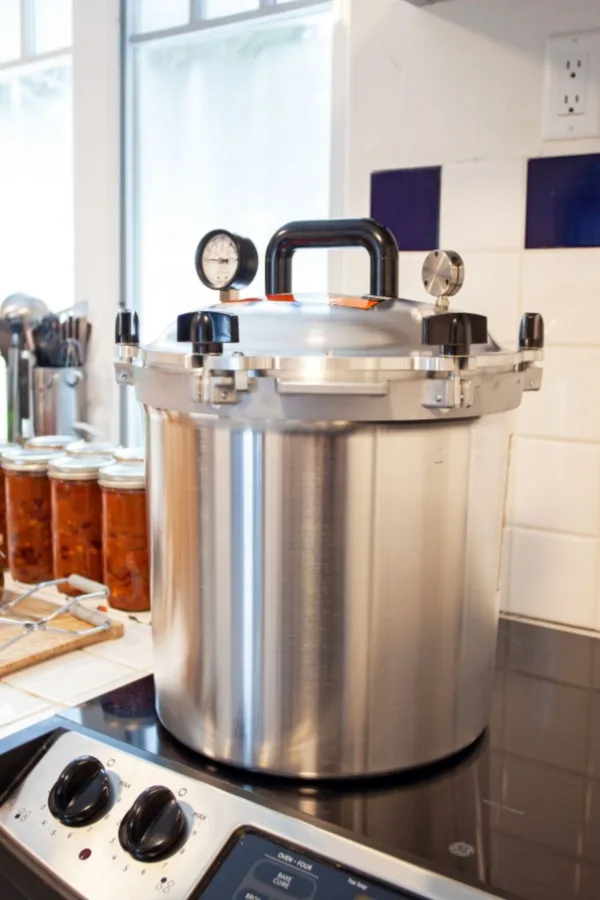Although garden season is just beginning for many of us, if you are planning on making jars of salsa, tomato sauce, and diced tomatoes from your garden this year, you need to know what it takes to safely can tomatoes.
There are a few important procedures that you’ll need to follow to make sure that your homemade goods are shelf-stable and free from food safety issues. In addition, knowing what type of equipment to use and when to use it is crucial when it comes to canning.
Even if you have been canning tomatoes or tomato products from the garden for many years, it might surprise you that safe canning recommendations are now much different than in years past. So if you are new to canning, or are still using the methods that Mom or Grandma taught you, you will definitely want to keep reading.

The Basics To Safely Can Tomatoes
There are two ways to can foods at home: water bath canning and pressure canning. The method you use depends on the acidity level of the food you’re preserving.
Water bath canning is used for high-acid foods. That includes most fruits, jams, jellies, pickles, and tomatoes – if the tomatoes are properly acidified with bottled lemon juice or citric acid.
Water bath canning is simpler, requires less equipment, and is the method most people use when canning tomatoes for things like juice or whole peeled tomatoes.
Pressure canning is required for low-acid foods such as meats, vegetables, soups, and anything that includes ingredients like onions, garlic, or peppers in large amounts. Some tomato recipes, like certain salsas or spaghetti sauces that include a mix of low-acid vegetables, require pressure canning to be safe.
The main difference between the two methods is temperature. A water bath canner heats jars to boiling – 212°F. A pressure canner raises the temperature above boiling, usually to 240°F or higher, which is necessary to kill off bacteria like the one responsible for botulism.
Open kettle canning (filling jars with hot contents and letting them seal at room temperature) and dry heat oven canning are no longer considered safe canning practices.

What You Need to Safely Can Tomatoes
Your list of supplies will depend slightly on what approved recipe and method you’re using, but many tools overlap. Here’s what you’ll need:
- Jars: Use mason jars made for home canning. Regular mouth or wide mouth is up to you. Be sure they are free from cracks or chips along the rim.
- Lids and Bands: Always use new lids each time you can. The screw bands can be reused as long as they’re not bent or rusty.
- Jar Lifter: This is a special set of tongs with rubber grips to safely transfer hot jars in and out of boiling water.
- Funnel: A wide-mouth funnel makes it easier to fill jars without spilling.
- Bubble Remover or Spatula: Helps release trapped air bubbles inside the jar before sealing.
- Clean Towels: Use for wiping jar rims and drying off jars. You can never have too many towels.
- Timer: You’ll need to process jars for the correct time based on recipe and altitude.
- Ladle: For scooping hot tomatoes or sauce into the jars.
- Bottled Lemon Juice or Citric Acid: This is non-negotiable when water bath canning tomatoes.
Canning Equipment:
Water Bath Canner: This is a deep pot with a rack at the bottom to keep jars off the direct heat. It should be deep enough to cover the tops of jars with at least 1 inch of water.
Pressure Canner: If you’re pressure canning tomatoes, you’ll need a canner specifically built for safely canning tomatoes – not just a pressure cooker. It will have a locking lid, vent, and/or pressure gauge or weight.
Why You Need Bottled Lemon Juice or Citric Acid
Tomatoes used to be considered a high-acid food, but over time, the acidity of some modern tomato varieties has decreased. That means they now hover on the edge of safe levels for water bath canning.
To make tomatoes safe for water bath canning, you must add bottled lemon juice or citric acid to each jar. This raises the acidity to a safe level that will prevent the growth of harmful bacteria, especially botulism spores.
It’s important to use bottled lemon juice, not fresh, because the acidity in fresh lemons can vary too much.
The general guideline is:
- Add 2 tablespoons of bottled lemon juice per quart of tomatoes (or 1 tablespoon per pint)
- Or use ½ teaspoon of citric acid per quart (or ¼ teaspoon per pint)

You add the lemon juice or citric acid directly into each jar before filling with tomatoes. Some people also add a little sugar to offset the tartness, but that’s optional and doesn’t affect safety.
Even if you’re pressure canning, it’s still often recommended to acidify tomatoes to be extra cautious – especially if the recipe doesn’t have other acidic ingredients like vinegar.
Water Bath vs. Pressure Canning
Choosing between water bath and pressure canning really depends on the recipe you’re using.
If you’re canning whole peeled tomatoes, crushed tomatoes, or tomato juice, water bath canning is safe – as long as you add the required acid and follow proper canning procedures.
If you’re making spaghetti sauce, tomato soup, or salsa, it depends on the ratio of the other ingredients. Onions, garlic, celery, and peppers lower the overall acidity of the food, so many of these recipes require pressure canning.
For example:
- A plain tomato sauce is safe to preserve using the water bath method as long as you add lemon juice or citric acid and follow proper canning instructions.
- A meat sauce or thick tomato-vegetable soup will need a pressure canning recipe.
Never guess. Even if a sauce looks thick and smells fine, harmful bacteria can grow in improperly canned low-acid foods. Often you won’t be able to tell if it is good or bad by sight or smell alone.
Always follow a tested recipe from a reliable source like the USDA, Ball Canning, or your local extension office.

Altitude Matters Too
Processing time and pressure both depend on your altitude. The higher you are, the longer or higher you’ll need to process to ensure that you safely can your tomatoes. Most tested recipes list processing times for under 1,000 feet of elevation.
For Boiling Water Processing
If you are boiling at an altitude higher than 1,000 feet above sea level, adjust boiling water processing time as indicated.
| Altitude Feet | Increase Processing Time |
|---|---|
| 1,001- 3,000 3,001- 6,000 6,001- 8,000 8,001-10,000 | 5 minutes 10 minutes 15 minutes 20 minutes |
For Pressure Canning
If you are boiling at an altitude higher than 1,000 feet above sea level, adjust pressure pounds as indicated.
| Altitude Feet | Weighted Gauge | Dial Gauge |
|---|---|---|
| 0- 1,000 1,001- 2,000 2,001- 4,000 4,001- 6,000 6,001-8,000 8,001-10,000 | 10 15 15 15 15 15 | 11 11 12 13 14 15 |
Storing Your Canned Tomatoes
When it comes to safely storing your canned tomatoes, they need to be in a cool, dark, and dry place. A pantry, basement, or cupboard works fine as long as the temperature stays relatively stable and doesn’t go above 95°F.
Here are some storage tips:
- Avoid direct sunlight: Light can cause color and flavor to fade.
- Keep jars off concrete floors: Store them on a shelf or board to prevent moisture buildup and potential rusting of the lids.
- Label your jars: Include the contents and the date.
- Use the oldest first: Try to use canned goods within one year for best quality, though they can stay safe longer if stored properly and the seal remains intact.
Before using a jar, always inspect it. Make sure the lid seals properly. If it’s bulging, leaking, or smells bad after opening, throw it away without tasting it. (See Related Article: How To Safely Store Canned Tomato Jars).

Canning tomatoes is a great way to make the most of your garden or take advantage of peak season prices at the market. With the right equipment, tested recipes, and proper safety steps like acidifying and choosing the right canning method, you can safely preserve jars of tomatoes to enjoy all year long.
Follow Our Facebook Page For Even More Great Tomato Growing Tips! I Grow Tomatoes Facebook Page
I Grow Tomatoes is a website created for those who love all things about tomatoes – from planting and growing – to cooking and canning! We publish two articles every week, 52 weeks a year. Sign up today to follow via email! This article may contain affiliate links.
